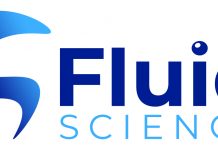Health & Safety (H&S) at work has long been a concern, not only to employees who happen to wonder if their health is protected within their work environment, but also for employers, with responsibilities ranging from advanced social responsibility practices to an increasing number of litigation cases.
In other terms, H&S has become an area of convergence and agreement between both the workforce and industry.
H&S issues may be mostly of interest to industry and other professional organizations, but they occasionally surface in the general press whenever dramatic events such as the Rana Plazza disaster in Bangladesh occur. The structural integrity of an industrial building is seldom an issue in Europe but more insidious, and less prone to making major headlines in the press, are occupational diseases that can surface decades after the exposure occurred. This can be the case for occupational exposure to chemical substances classified as CMR (Carcinogens, Mutagens or toxic for Reproduction). CMR substances are, together with substances that are persistent, bio-accumulative and toxic (PBT or vPvB, including endocrine disruptors), considered to be Substances of Very High Concern (SVHC). The European Regulation No. 1907/2006, (REACH) aims to identify and target these substances to ensure they can be used safely
before they are substituted; it also aims to foster active R&D programs towards substitution.
Once defined as a SVHC, the last stage of the priority-setting program conducted by the European CHemical Agency (ECHA) will be a listing in Annex XIV of REACH and a phase-out date specified, the so-called sunset date. By the sunset date the substance should no longer be manufactured or supplied in the EU.
However, some substances listed in Annex XIV are invaluable to both industry and society and cannot easily be replaced. Many of these hazardous compounds are associated with a poor occupational health track-record, for example hexavalent chromium. But a potential ban from the market place would create a huge gap in the array of surface-treatment and anti-corrosion technologies available to the aerospace, automotive and machine-building industries. Decades of intense R&D activity have failed to identify substitutes, so implementing a replacement solution, whenever available, remains a mammoth task.
Under REACH, the only option open to industry is to apply for an Authorization for a number of specific uses. Such a task is forbidding because there are many question marks attached to what is generally recognized as a new and untried procedure. There is no clear rationale on defining a sunset date, nor any guarantee of on-going product availability or safe operational practices.
Authorizations under REACH should present an opportunity for ECHA to promote best practice in the Best Available Technologies (BAT), to ensure for some time the continued safe supply and use of SVHCs. This approach would ensure that the EU-internal market would be controlled and would guarantee that only operations complying with strict regulation could continue using the substance.
An unexpected outcome of REACH authorization may be that industry chooses to circumvent EU regulations by ‘re-locating’ hazardous operations and REACH may be blamed for the loss of jobs within the EU. Conversely, the retention of operations in the EU, whilst adding a small margin to industry costs, should result in reduced potential exposures in non-EU countries and avoid adverse publicity provoked by NGOs complaining of the unethical duality of application by industry of H&S standards. The spotlight will be on industry to see how it manages this dilemma.
Michel GUILHEM is currently a director of ChemAdvocacy S.A., The Authorization Company.
Previously he held EHS management positions in the chemical and pharmaceutical industries, and as a senior professional in world-class environmental consultancies.














